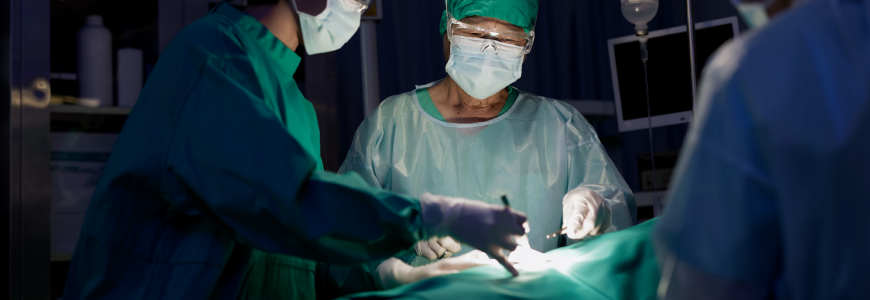The Duke Cancer Institute (DCI) breast oncology and plastic surgery teams have enhanced their collaboration and capacity to treat breast cancer cases. With the addition of two new microvascular-trained plastic surgeons, patients have increased access to Duke’s innovative breast cancer reconstruction procedures — many of which aren’t offered at other nearby centers.
“Two former Duke resident graduates recently joined our team after training at top cancer centers,” says Brett T. Phillips, MD, microvascular and breast reconstructive plastic surgeon. Andrew N. Atia, MD, MBA, trained at MD Anderson Cancer Center, and Whitney Lane, MD, trained at Memorial Sloan Kettering. “They bring innovative techniques learned at these prestigious centers.”
The new surgeons join an experienced team, including breast surgeon Maggie L. DiNome, MD, and Phillips, who frequently collaborate on complex cases with intricate timing to offer patients customized surgical care plans that optimally treat breast cancer while maximizing the patients’ reconstructive outcomes.
“Expanding the plastic surgery team is a great step forward for our program. The increased ability to collaborate translates into more leading-edge breast reconstructive options for patients,” says DiNome.

To refer a patient to Duke Cancer Institute for breast cancer care, call 1-866-DUKE-123.
Impressive reconstructive techniques
The plastic surgery and breast oncology surgery teams have extensive experience. “Nearly all reconstructive surgeons in the breast program are microvascular-trained and breast surgeons, fellowship-trained in multidisciplinary oncologic surgical care,” says DiNome.
“We offer the full gamut of breast reconstruction, from simple oncoplastic closure of lumpectomy defects, including lifts or reductions that can complement a lumpectomy, to traditional implant reconstruction and multiple options for complex autologous flap procedures with unique donor sites,” says Phillips.
“Our plastic surgeons do impressive procedures that I’m grateful to offer patients,” says DiNome. One procedure is the DIEP flap, which eliminates the need for an implant by taking fat from the belly to build a new breast. This is a complicated procedure that involves reconnecting blood vessels that supply newly placed fat cells into the chest wall.
“While less common, we also specialize in the Profunda Artery Perforator flap (PAP Flap) and Lumbar Artery Perforator Flap (LAP Flap) procedures, which can provide great results for patients who aren’t candidates for more traditional autologous procedures,” says Phillips.
The team also performs the Goldilocks procedure, where a breast surgeon removes the underlying breast tissue and the plastic surgeon immediately uses a flap of the patient’s breast skin to add volume to the breast without an implant. “We have the bandwidth to do complex yet efficacious procedures that other centers in our region don’t do,” says Phillips.
Leading in breast-conserving procedures
Our two new breast surgeons, Ton Wang, MD, MS, and Kendra Parrish, DO, specialize in breast-conserving surgeries, skin-sparing mastectomies, and nipple-sparing mastectomies with an emphasis on aesthetic outcomes. Wang has performed dual surgeries with her husband, a Duke reconstructive plastic surgeon David M. Stepien, MD, PhD.
Breast surgeon Akiko Chiba, MD, FACS, is leading a robotic mastectomy trial at DCI. The procedure is performed in collaboration with plastic surgeons Geoffroy Sisk, MD and Rebecca Knackstedt, MD to complete direct-to-implant reconstruction. This multi-center study examines the potential impact of this minimally invasive procedure to optimize clinical and aesthetic outcomes.